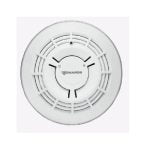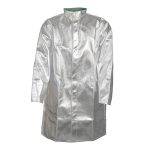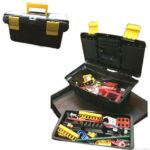Your list is empty, add products to the list to send a request
What Are the Principles of Fire Extinguisher? Complete Guide to Fire Suppression Science

18
Jun
Fire extinguishers are vital safety tools found in homes, vehicles, offices, and industrial settings. While many people know how to use one, few understand the scientific principles that make these devices effective.
In this in-depth guide, we explain the core principles behind fire extinguishers, focusing on how they stop fires, the ABC extinguisher mechanism, and key fire prevention rules. Whether you’re a safety officer or homeowner, this guide will enhance your knowledge and preparedness.
Understanding the Fire Triangle: The Basis of Fire Extinguishment
To understand how fire extinguishers work, you first need to know about the fire triangle. A fire needs three elements to ignite and continue burning:
- Heat
- Fuel
- Oxygen
If any one of these elements is removed, the fire will be extinguished. This concept is the core principle used by all fire extinguishers.
What Is the Principle of How Fires Are Extinguished?
Fire extinguishers operate based on disrupting one or more sides of the fire triangle:
- Cooling (removing heat): Water-based extinguishers cool the burning material
- Smothering (removing oxygen): Foam and CO2 extinguishers displace or isolate oxygen
- Starving (removing fuel): Dry chemical extinguishers interrupt the chemical reaction
Types of Fire Extinguishers and Their Operating Principles
Different types of extinguishers work in different ways:
- Water (Class A only): Absorbs heat
- Foam (Class A & B): Forms a barrier over flammable liquids
- CO2 (Class B & C): Displaces oxygen and cools
- Dry Powder/ABC (Class A, B & C): Interrupts the chemical chain reaction
Among these, the ABC dry powder extinguisher is the most versatile and commonly used.
What Is the Principle of ABC Fire Extinguisher?
ABC fire extinguishers use monoammonium phosphate, a dry chemical powder, to stop fires by:
- Coating the fuel source with a layer of powder
- Interrupting the chemical chain reaction in combustion
- Forming a barrier that blocks oxygen
This makes them ideal for:
- Class A (ordinary combustibles)
- Class B (flammable liquids)
- Class C (electrical fires)
The Lightex ABC Fire Extinguisher is a reliable multi-use option suitable for home and workplace safety.
Stored Pressure Principle in Fire Extinguishers
Stored pressure extinguishers, like the Lightex model, operate by keeping the extinguishing agent and propellant (usually nitrogen) in the same chamber. When activated:
- Pressure forces the agent out through the nozzle
- Controlled flow ensures proper dispersion
- Easy-to-read pressure gauges show readiness
This simple mechanism ensures fast response and ease of use.
Advantages of ABC Fire Extinguishers
- Multi-purpose protection (A, B, and C classes)
- No electricity needed to operate
- Low maintenance and refillable
- Compact sizes like 2 KG and 4 KG for portability
- Trusted by fire safety professionals and facility managers
What Are 5 Rules for Preventing Fire?
Prevention is better than cure. Follow these five fire safety rules:
- Keep flammable materials away from heat sources
- Install smoke detectors and test them monthly
- Avoid overloading electrical circuits
- Store fire extinguishers in accessible locations
- Educate everyone on emergency procedures
Best Placement and Usage Tips
- Mount extinguishers 3.5–5 feet off the ground
- Keep near exits, kitchens, and electrical panels
- Avoid storing near stoves or in high-heat areas
- Ensure clear visibility with no obstructions
Familiarize everyone with the PASS technique:
- Pull the pin
- Aim at the base of the fire
- Squeeze the handle
- Sweep side to side
Maintenance and Inspection Principles
- Monthly checks: Pressure gauge, tamper seal, and physical damage
- Annual servicing by professionals
- Refill immediately after discharge
- Replace every 10–15 years, even if unused
The Lightex ABC extinguisher comes with easy-read pressure indicators and is built for long-term safety.
Common Scenarios Where Fire Extinguishers Save Lives
- Kitchen fires from oil splashes or electric short circuits
- Workshop fires from chemicals or machinery
- Vehicle fires from engines or batteries
- Office fires from overloaded sockets or heating devices
- Public buildings during fire alarms or smoke detection
Conclusion: Understand Principles, Enhance Safety
Fire extinguishers work by disrupting the fire triangle through cooling, smothering, or chemical interruption. ABC dry chemical extinguishers are especially effective because they address multiple fire classes with one unit.
Ensure your safety setup includes a reliable model like the Lightex ABC Fire Extinguisher, and maintain it properly to stay prepared.
FAQs
1. What is the principle of how fires are extinguished?
Fires are extinguished by removing one or more sides of the fire triangle: heat, fuel, or oxygen.
2. What is the principle of ABC fire extinguisher?
ABC extinguishers use dry chemical powder to coat the fuel and interrupt the fire’s chemical reaction, removing heat and oxygen.
3. What are 5 rules for preventing fire?
Avoid flammable clutter, test smoke alarms, don’t overload sockets, place extinguishers correctly, and educate others about fire safety.
Don’t just own a fire extinguisher—understand how it works.
Get the Lightex ABC Fire Extinguisher and empower yourself with the science and safety behind fire control.



























